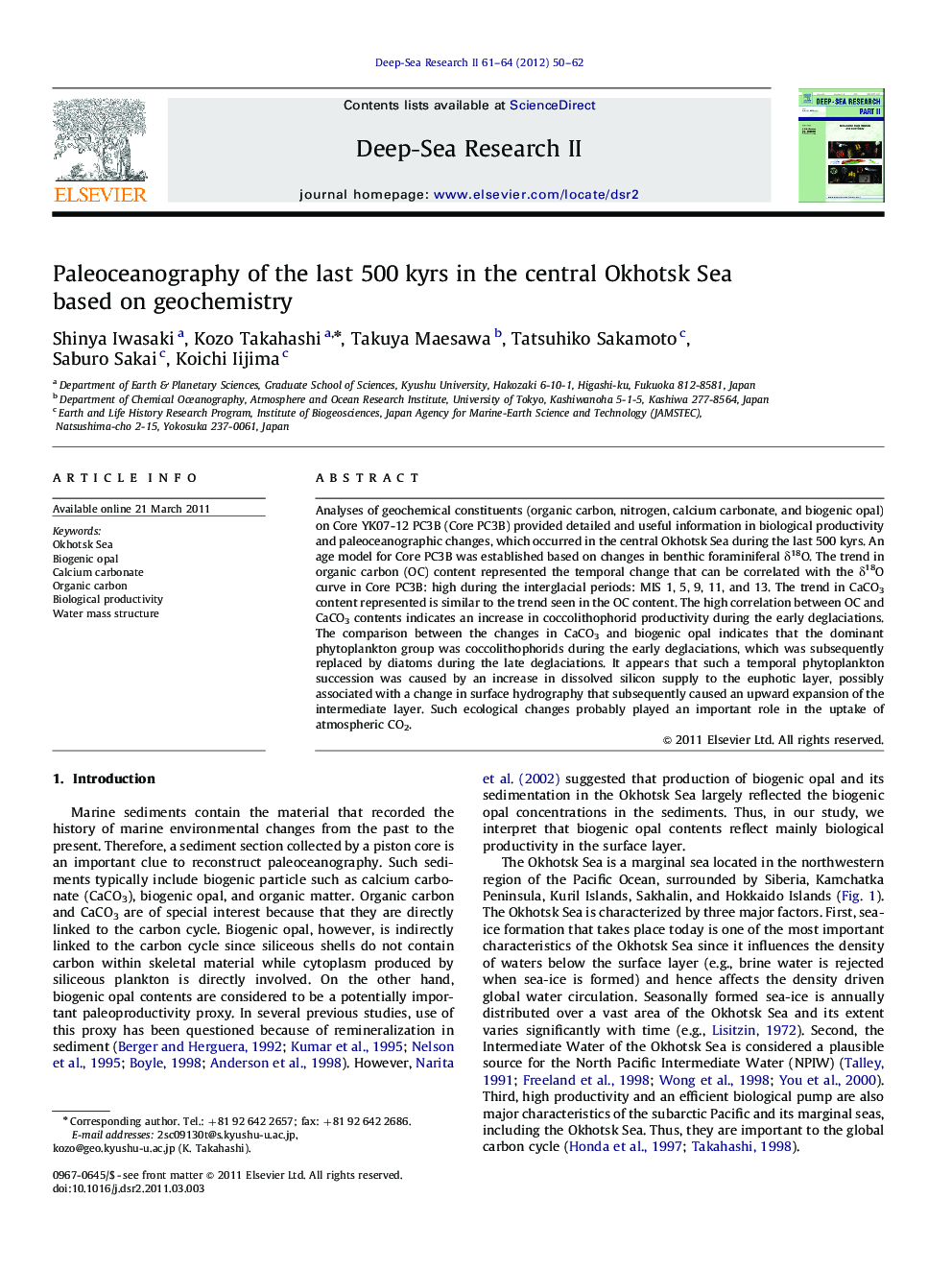| Article ID | Journal | Published Year | Pages | File Type |
|---|---|---|---|---|
| 4536765 | Deep Sea Research Part II: Topical Studies in Oceanography | 2012 | 13 Pages |
Analyses of geochemical constituents (organic carbon, nitrogen, calcium carbonate, and biogenic opal) on Core YK07-12 PC3B (Core PC3B) provided detailed and useful information in biological productivity and paleoceanographic changes, which occurred in the central Okhotsk Sea during the last 500 kyrs. An age model for Core PC3B was established based on changes in benthic foraminiferal δ18O. The trend in organic carbon (OC) content represented the temporal change that can be correlated with the δ18O curve in Core PC3B: high during the interglacial periods: MIS 1, 5, 9, 11, and 13. The trend in CaCO3 content represented is similar to the trend seen in the OC content. The high correlation between OC and CaCO3 contents indicates an increase in coccolithophorid productivity during the early deglaciations. The comparison between the changes in CaCO3 and biogenic opal indicates that the dominant phytoplankton group was coccolithophorids during the early deglaciations, which was subsequently replaced by diatoms during the late deglaciations. It appears that such a temporal phytoplankton succession was caused by an increase in dissolved silicon supply to the euphotic layer, possibly associated with a change in surface hydrography that subsequently caused an upward expansion of the intermediate layer. Such ecological changes probably played an important role in the uptake of atmospheric CO2.
